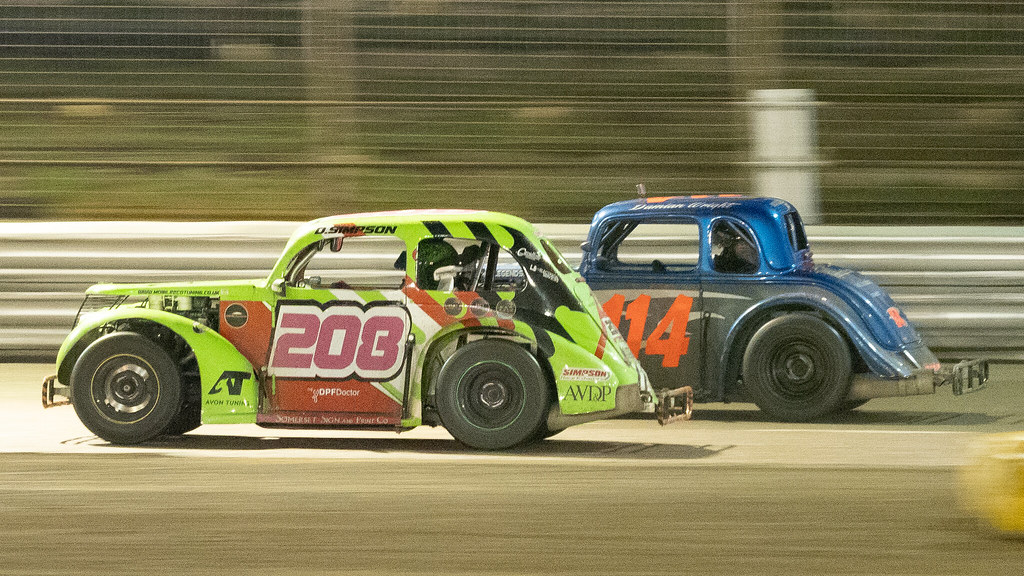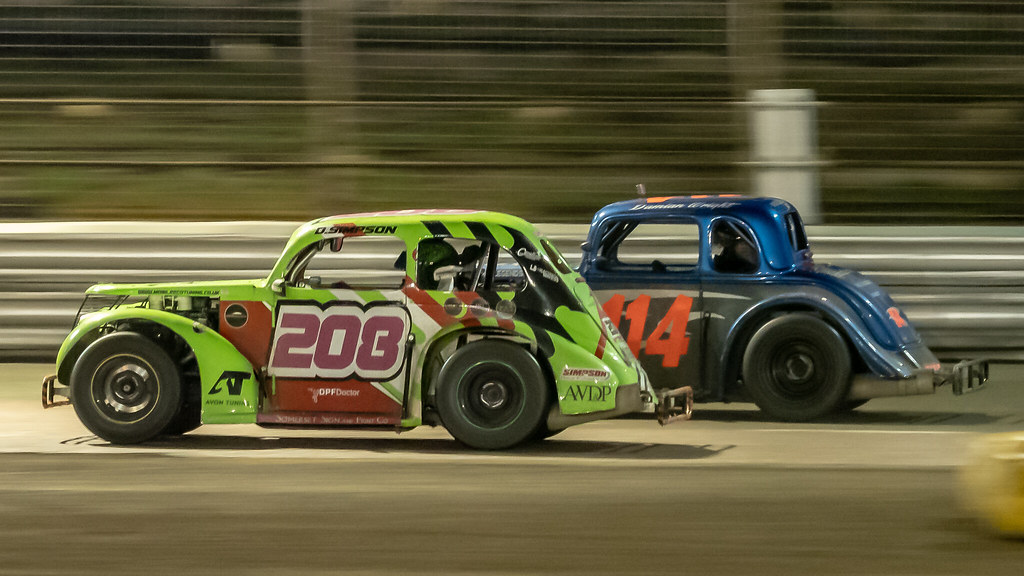- Messages
- 312
- Name
- Mark
- Edit My Images
- Yes
So, I had the chance to use my Olympus EM1 Mk2 + 40-150 f/2.8 lens for the first time this weekend at an event that mostly took place after sunset, oval racing track under floodlights, poor lighting conditions. I knew when I bought the camera that noise was going to be the achilles heel of the m4/3 format, and figured I didn't mind as 95% of my photos are taken during the day.
However I'd still like to produce some useful pictures if I can, so a 2-pronged question :
1. What can I do, other than what I am doing, to mitigate the affect of noise?
2. Advice on dealing with noise in PP?
Here's an example image :-

Shutter priority mode, 1/80th of a second, aperture f/3.2 (not sure why it didn't select f/2.8 which the lens is capable of, but it's only 1/3rd of a stop), ISO 6400.
I know I could've gone lower on the shutter, but 1/80th gives a decent amount of motion blur without having to throw too many away due to poor panning skills. In this example, during a day race, I would've had my 1.4x TC fitted (as the above image has been cropped more than I'd usually like), but that would've meant f/4 and ISO 12800(-ish) at this shutter speed.
I don't suppose there's much I can do, other than practise practise practise at lower shutter speeds, but if anyone uses a m4/3 for low light sports and has any tips, they'd be greatly appreciated!
The main question I have is how to handle this in PP.
I use Lightroom CC (the new cloud version because it suits my workflow and I don't need the bells and whistles of the full desktop version). I know I can slide the noise reduction slider over to the right, but is there a process I should be following, I find adjusting exposure, sharpening, clarity or anything else I might want to do to the image only adds more noise. Any tips for handling noise in PP also gratefully received!
However I'd still like to produce some useful pictures if I can, so a 2-pronged question :
1. What can I do, other than what I am doing, to mitigate the affect of noise?
2. Advice on dealing with noise in PP?
Here's an example image :-

Shutter priority mode, 1/80th of a second, aperture f/3.2 (not sure why it didn't select f/2.8 which the lens is capable of, but it's only 1/3rd of a stop), ISO 6400.
I know I could've gone lower on the shutter, but 1/80th gives a decent amount of motion blur without having to throw too many away due to poor panning skills. In this example, during a day race, I would've had my 1.4x TC fitted (as the above image has been cropped more than I'd usually like), but that would've meant f/4 and ISO 12800(-ish) at this shutter speed.
I don't suppose there's much I can do, other than practise practise practise at lower shutter speeds, but if anyone uses a m4/3 for low light sports and has any tips, they'd be greatly appreciated!
The main question I have is how to handle this in PP.
I use Lightroom CC (the new cloud version because it suits my workflow and I don't need the bells and whistles of the full desktop version). I know I can slide the noise reduction slider over to the right, but is there a process I should be following, I find adjusting exposure, sharpening, clarity or anything else I might want to do to the image only adds more noise. Any tips for handling noise in PP also gratefully received!
Last edited:



